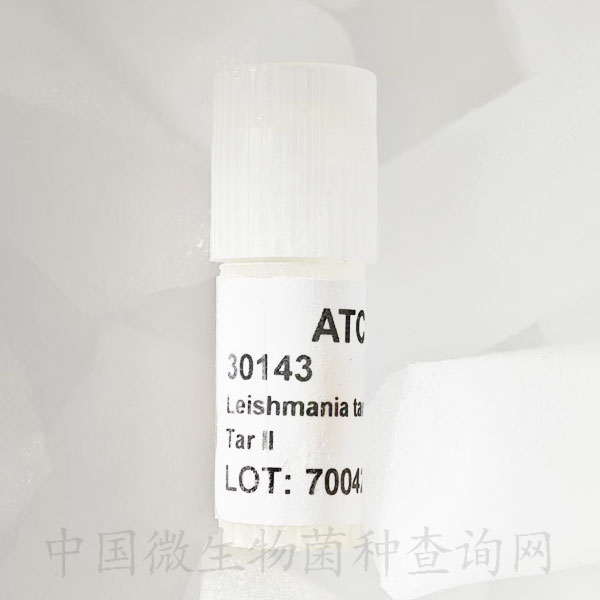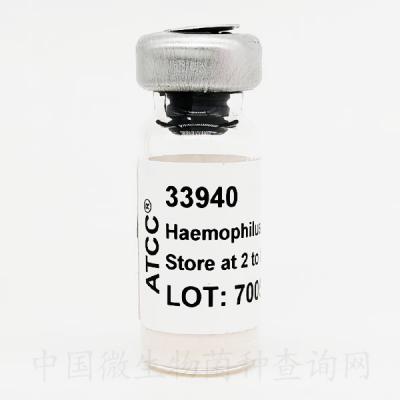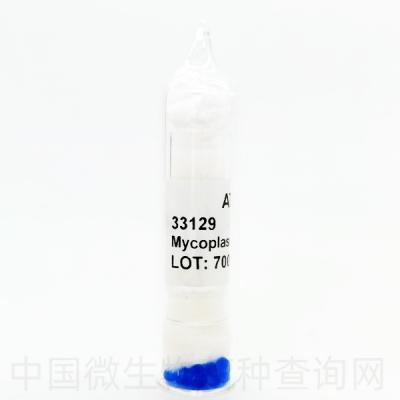Leishmania tarentolae Parrot 拉丁名
ATCC 30143 編號
Strain Designations Tar II
Biosafety Level 安全等級 1
Biosafety classification is based on U.S. Public Health Service Guidelines, it is the responsibility of the customer to ensure that their facilities comply with biosafety regulations for their own country.
Isolation 分離基物 lizard, Tarentola mauritanica, Biakra, Algeria, 1934
Product Format 提供形式 frozen
Type Strain 模式菌株 no
Comments
Mutant of W. Trager strain (ATCC 30267). Promastigotes.
Effect of temperature on growth and nutritional requirements
lipids
Heterogeneity of minicircles
isoenzyme electrophoresis for species identification
Variation in kinetoplast minicircle and maxicircle DNA sequences
Cyclopropane fatty acid
Medium 培養(yǎng)基 ATCC Medium 1011: Diphasic blood agar medium
Growth Conditions 生長條件
Temperature 培養(yǎng)溫度 : 25.0°C
Duration: axenic
Protocol: ATCCNO: 11745 SPEC: See general instructions for thawing and storage of frozen material before proceeding. Add thawed contents to a single 16 x 125 mm glass screw-capped test tube of the appropriate medium. Incubate the culture vertically with the cap screwed on tightly. It is essential to establish cultures initially in small volumes. Once established, the culture can be scaled up to larger volumes. Vigorously agitate the culture and aseptically transfer 0.1 ml of culture to a fresh tube of medium weekly.
Subcultivation
Protocol: ATCCNO: 11745 SPEC: See general instructions for thawing and storage of frozen material before proceeding. Add thawed contents to a single 16 x 125 mm glass screw-capped test tube of the appropriate medium. Incubate the culture vertically with the cap screwed on tightly. It is essential to establish cultures initially in small volumes. Once established, the culture can be scaled up to larger volumes. Vigorously agitate the culture and aseptically transfer 0.1 ml of culture to a fresh tube of medium weekly.
Cryopreservation
1. Harvest cells from a culture which is at or near peak density by centrifugation at 1,300 g for 5 min.
2. Adjust concentration of cells to 2 x 107/ml in fresh medium.
3. While cells are centrifuging prepare a 10% (v) solution of sterile DMSO in Locke?s solution. The DMSO solution when first prepared will warm up due to chemical heat. The solution should be allowed to return to room temperature prior to use.
4. Mix the cell preparation and the DMSO solution in equal portions. The final concentration will be 107 cells/ml and 5% (v) DMSO. The time from the mixing of the cell preparation and DMSO stock solution before the freezing process is begun should be no more than 15 min.
5. Dispense in 0.5 ml aliquots into 1.0 - 2.0 ml sterile plastic screw-capped cryules (special plastic vials for cryopreservation).
6. Place the ampules in a Nalgene 1°C freezing apparatus. Place the apparatus at -80°C for 1.5 to 2 hours and then plunge ampules into liquid nitrogen. (The cooling rate in this apparatus is approximately -1°C/min.)
7. Store in either the vapor or liquid phase of a nitrogen refrigerator.
8. To thaw a frozen ampule, place it in a 35°C water bath such that the lip of the ampule remains above the water line. Thawing time is approximately 2 to 3 minutes. Do not agitate the ampule. Do not leave ampule in water bath after thawed.
9. Immediately after thawing, do not leave in the water bath, aseptically transfer the contents of the ampule into a fresh tube of ATCC medium 1011.
10. Incubate vertically at 25°C with the cap screwed on tightly.
11. Maintain as described above. Name of Depositor SM Krassner
Chain of Custody
ATCC <<--SM Krassner<<--W. Trager <<--- L. Parrot
Year of Origin 1934
References
Krassner SM. Effect of temperature on growth and nutritional requirements of Leishmania tarentolae in a defined medium. J. Protozool. 12: 73-78, 1965. PubMed: 14292557
Beach DH, et al. Lipids of Leishmania promastigotes. J. Parasitol. 65: 201-216, 1979. PubMed: 448607
Englund PT, et al. A nicked form of kinetoplast DNA in Leishmania tarentolae. J. Biol. Chem. 252: 6208-6216, 1977. PubMed: 893402
Challberg SS, Englund PT. Heterogeneity of minicircles in kinetoplast DNA of Leishmania tarentolae. J. Mol. Biol. 138: 447-472, 1980. PubMed: 6251227
Goncalves de Lima VM, et al. Five trypanosomatid species of insects distinguished by isoenzymes. J. Protozool. 26: 648-652, 1979. PubMed: 161788
Fish WR, et al. The cyclopropane fatty acid of trypanosomatids. Mol. Biochem. Parasitol. 3: 103-115, 1981. PubMed: 7254247
Gomez-Eichelmann MC, et al. Comparison of several lizard Leishmania species and strains in terms of kinetoplast minicircle and maxicircle DNA sequences, nuclear chromosomes, and membrane lipids [published erratum appears in Mol. Biochem. Parasitol. 28: 301, 1988]. Mol. Biochem. Parasitol. 27: 143-158, 1988. PubMed: 3344003






